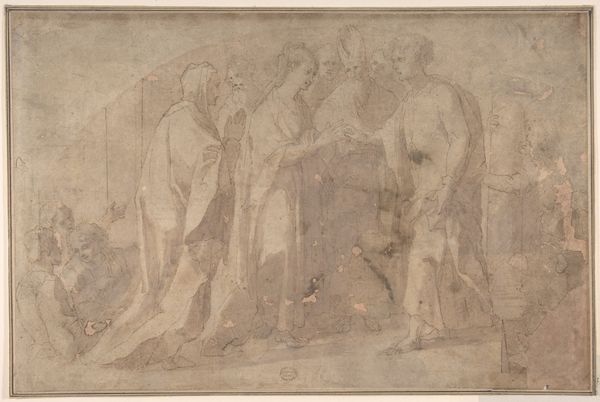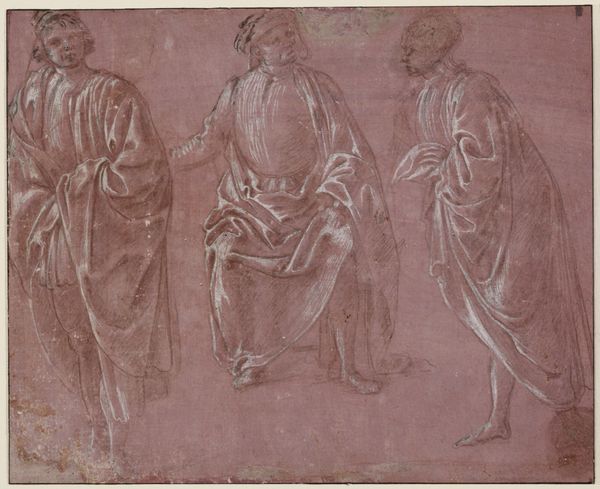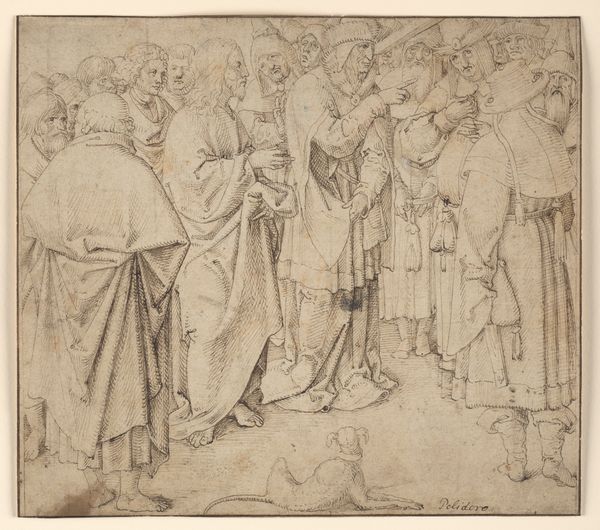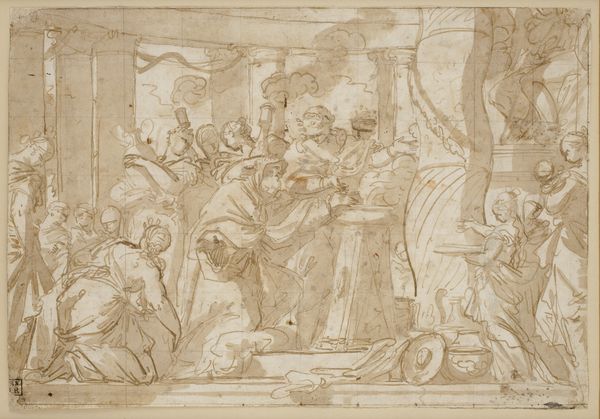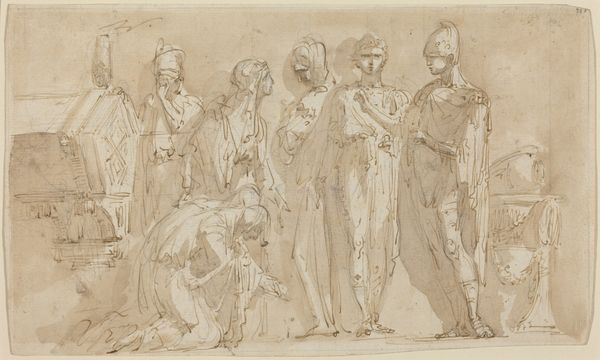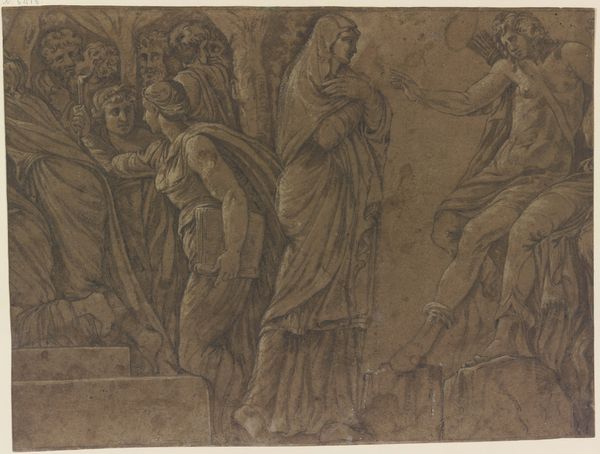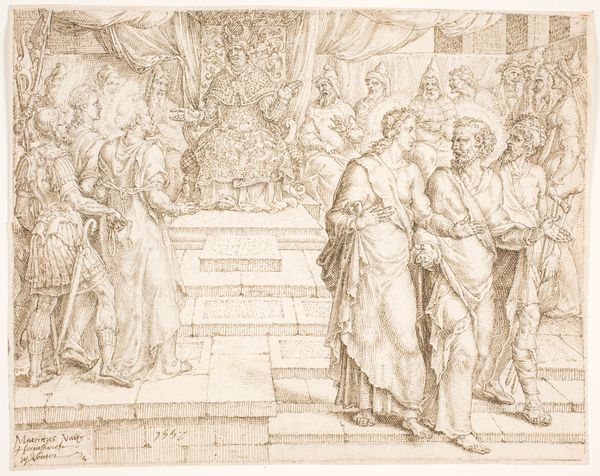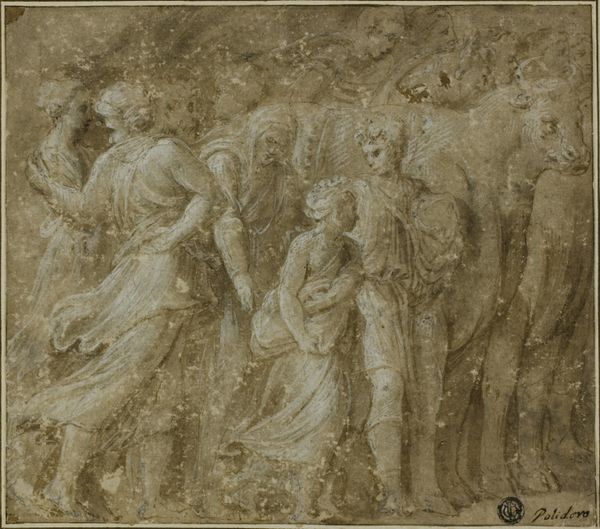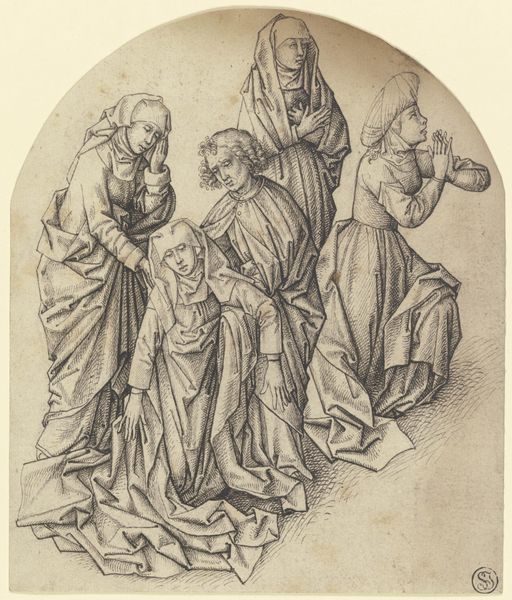
drawing, charcoal
#
drawing
#
medieval
#
charcoal drawing
#
figuration
#
charcoal
#
history-painting
#
italian-renaissance
Dimensions: 4 5/16 x 5 7/8 in. (11 x 14.9 cm)
Copyright: Public Domain
Editor: Here we have Antonello da Messina’s "Group of Draped Figures," created around 1460-1465. It’s a charcoal drawing, currently housed at the Met. The anonymity of these figures, concealed in heavy drapery, is striking. It’s quite haunting. What do you see in this piece, especially considering the period it was created in? Curator: It's fascinating how Messina uses drapery to both conceal and reveal. Think about the societal function of religious garments at this time; the church held immense power and heavily regulated self-representation, particularly for women. This drawing almost feels like a study in controlled visibility, right? Who decides who gets to be seen and how? Editor: That’s a good point, it definitely adds to that mysterious quality. I wonder, though, if the history of art collecting also plays a role? Is its presence here, in the Met, contributing something to how we interpret these veiled figures today? Curator: Absolutely! Museums aren't neutral spaces; their collections are shaped by historical power dynamics. By displaying this drawing, the Met gives authority to a particular reading of the Renaissance. We could even say this piece has been "redraped" in institutional narratives, altering how contemporary viewers approach it. It raises important questions about canon formation, doesn't it? Editor: It does. I never really thought of the institution as having such a heavy hand in guiding interpretation. Curator: Museums have long curated narratives alongside their art. Examining these curatorial choices reveals a lot about our social and political values too. Consider the other Renaissance works it's displayed alongside. What narrative do those juxtapositions tell? Editor: I see what you mean. Thinking about this drawing, and art history in general, in the context of its curation provides an important critical lens. Thanks for opening my eyes to that. Curator: It's all about digging beneath the surface, isn't it? Thanks for thinking this through with me.
Comments
No comments
Be the first to comment and join the conversation on the ultimate creative platform.

